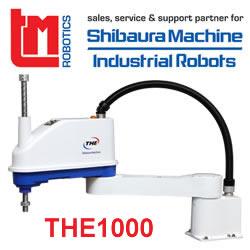Mobile Robots Are Moving In: A Quiet Revolution with Billion-Dollar Momentum
The mobile robots market is set to grow from $18.49B in 2024 to $63.28B by 2035, driven by labor shortages, automation demand, and tech advances. This release explores key trends, market drivers, and how industries are rapidly adopting mobile robotics solutions.
It wasn't long ago that mobile robots were considered cutting-edge novelties—fun to look at, maybe helpful in a lab, but not quite ready for the real world. That's changing fast. These autonomous machines, capable of navigating complex environments on their own, are no longer just an option for the future. They're becoming a necessity for the present.
And the market's reflecting that shift in a big way.
According to a new study by Roots Analysis, the mobile robot market is expected to balloon from $18.49 billion in 2024 to $63.28 billion by 2035, marking a compound annual growth rate (CAGR) of 11.83% over the next decade.
That's not just growth. That's a seismic shift.
What's Driving the Boom?
One of the biggest drivers is the ongoing labor shortage. Warehouses, factories, hospitals, and farms around the world are struggling to find and retain workers—especially for repetitive, physically demanding, or sometimes risky tasks. Mobile robots, in many cases, are stepping in where human labor falls short.
"We're not talking about replacing people," says Elena Porter, who consults with logistics firms in North America. "We're talking about augmenting the workforce. Robots don't get tired, don't call in sick, and don't make as many mistakes on repetitive tasks. That reliability is priceless in today's business climate."
It's not just about labor, though. Businesses are also under pressure to move faster, become more precise, and stay competitive in a digital-first economy. Mobile robots offer that edge.
Smarter, Faster, More Capable
The technology behind mobile robots has matured quickly. Thanks to advancements in machine learning, real-time data processing, and computer vision, these robots can now do much more than simply roll from Point A to Point B. They can map environments, detect obstacles, and even make split-second decisions based on real-time feedback.
What's more, the integration of 5G and edge computing is making it easier to deploy these robots in places where speed and precision matter—think hospital corridors, large warehouses, or even outdoor agricultural fields.
Startups and Giants Both in the Game
Big names like Boston Dynamics and ABB continue to lead the charge, but they're not alone. Startups are carving out specialized niches—delivery bots, retail assistants, security patrol robots—and investors are paying attention. In the past year alone, funding rounds for robotics companies have seen record highs.
"The amount of innovation coming from the startup ecosystem is incredible," Porter adds. "They're nimble, creative, and solving real-world problems."
Looking Ahead
According to Roots Analysis, Asia-Pacific is expected to dominate the mobile robotics landscape by 2035, thanks in part to aggressive investments in automation and manufacturing. That said, North America and Europe are still considered key innovation centers, particularly for healthcare and service robotics.
If the projections hold, we're looking at a world where mobile robots are as common as forklifts or vending machines—embedded in daily operations, not as flashy showpieces but as workhorses that quietly get the job done.
The Bottom Line
Mobile robots aren't coming. They're already here—and they're multiplying.
For businesses that have yet to embrace them, the window to experiment is closing. The next phase is full-scale integration. And judging by the numbers, that future is arriving faster than most people think.
Featured Product

